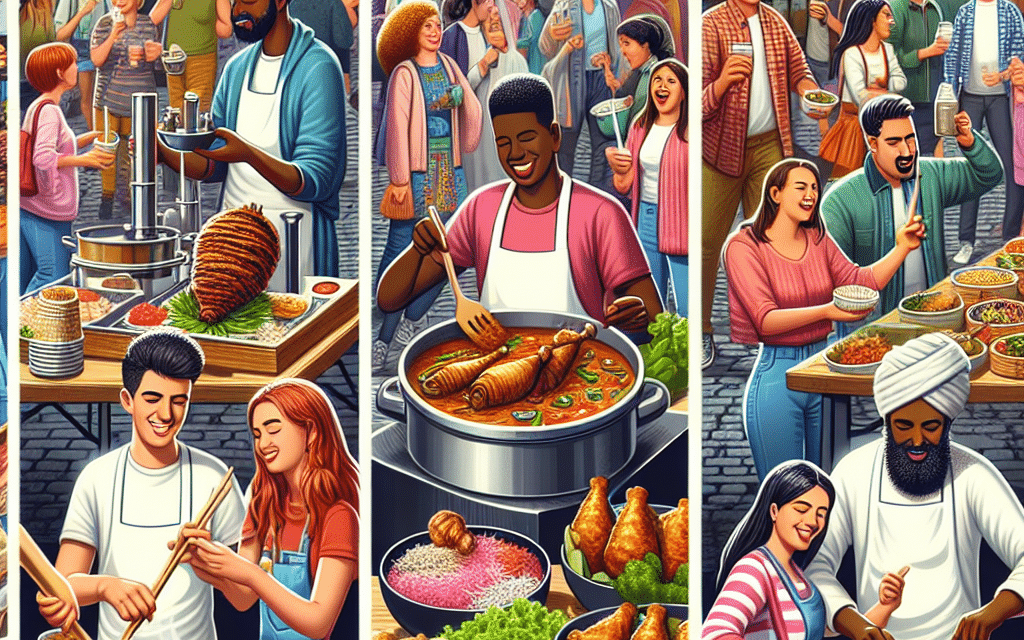Cultural diversity profoundly influences food and beverage innovation by inspiring new products, flavors, and culinary techniques while expanding market opportunities. It allows companies to cater to diverse consumer preferences, create unique offerings, and foster global connections. Here’s how cultural diversity drives innovation in the industry:
1. Introduction of Unique Flavors and Ingredients
- Impact: Cultural diversity introduces regional and ethnic flavors, spices, and ingredients into mainstream markets.
- Examples:
- Korean gochujang-inspired sauces are gaining popularity in global cuisines.
- Middle Eastern za’atar and tahini are incorporated into snack foods.
- Latin American influence introduced flavors like chipotle and guava to beverages.
- Innovation Opportunities: Brands can explore hybrid dishes (e.g., kimchi tacos) or beverages (e.g., turmeric lattes) that fuse traditional and modern tastes.
2. Catering to Multicultural Consumer Preferences
- Impact: Companies develop products that resonate with specific cultural groups or celebrate diversity.
- Examples:
- Halal-certified or kosher-certified products for religious dietary needs.
- Authentic ethnic meals, such as Indian curry kits or Mexican mole sauces, for home cooking.
- Non-alcoholic beverages for cultures where alcohol consumption is limited.
- Innovation Opportunities: Develop culturally tailored products for festivals, religious events, or traditional celebrations.
3. Global Fusion Cuisine
- Impact: The blending of flavors and techniques from different cultures creates innovative food and beverage experiences.
- Examples:
- Sushi burritos combine Japanese sushi with Mexican-inspired burrito wrapping.
- Matcha-infused desserts combine Japanese tea traditions with Western pastry-making.
- Innovation Opportunities: Create experiential dining or ready-to-eat products that celebrate cross-cultural inspirations.
4. Inspiration for Plant-Based and Health-Conscious Trends
- Impact: Cultural practices, such as vegetarian diets in India or Mediterranean diets, inspire health-focused innovations.
- Examples:
- Plant-based protein alternatives inspired by tofu (China) and tempeh (Indonesia).
- Superfoods like quinoa (Peru) and açai (Brazil) are gaining global prominence.
- Innovation Opportunities: Develop nutrient-rich, plant-based snacks or beverages influenced by traditional wellness practices.
5. New Beverage Categories
- Impact: Cultural traditions influence the creation of innovative beverage products.
- Examples:
- Bubble tea from Taiwan is becoming a global phenomenon.
- Fermented beverages like kombucha (inspired by Eastern traditions) are gaining popularity in health-conscious markets.
- Yerba mate from South America is emerging as a natural energy drink.
- Innovation Opportunities: Develop culturally inspired functional beverages with added health benefits.
6. Regional Adaptations of Existing Products
- Impact: Adapting products to meet local cultural tastes and preferences.
- Examples:
- McDonald’s offers McSpicy Paneer in India or Teriyaki Burgers in Japan.
- Lay’s creates culturally inspired chip flavors like Masala Magic (India) or Peking Duck (China).
- Innovation Opportunities: Tailor global products for local markets, respecting cultural authenticity.
7. Revival of Traditional Practices
- Impact: The rediscovery of traditional preservation and preparation methods brings cultural heritage to modern consumers.
- Examples:
- Fermentation techniques for pickles, kimchi, or miso are becoming trendy in gourmet and health-conscious sectors.
- Slow cooking or clay pot methods are highlighted in ready-to-eat or meal kit products.
- Innovation Opportunities: Modernize traditional cooking methods for convenience while maintaining authenticity.
8. Focus on Storytelling and Branding
- Impact: Highlighting the cultural origins of products enhances consumer engagement and trust.
- Examples:
- Branding that celebrates indigenous practices or artisanal craftsmanship, such as fair-trade coffee or heritage grains.
- Packaging designs featuring cultural motifs or narratives about the product’s origin.
- Innovation Opportunities: Build brand stories that connect consumers to the cultural roots of the product.
9. Promoting Inclusivity
- Impact: A diverse product range ensures inclusivity for dietary preferences and restrictions.
- Examples:
- Gluten-free naan for individuals with dietary sensitivities, inspired by Indian cuisine.
- Lactose-free versions of traditional dairy-based products like Greek yogurt.
- Innovation Opportunities: Develop accessible options for diverse dietary needs without compromising cultural authenticity.
10. Expanding Global Palates
- Impact: Exposure to diverse cuisines through travel, media, and migration drives consumer curiosity.
- Examples:
- Global culinary shows sparking interest in dishes like Ethiopian injera or Filipino adobo.
- Street food-inspired snacks, such as bao buns or churros, are packaged for mainstream retail.
- Innovation Opportunities: Launch limited-edition or seasonal products to test global flavor trends.
11. Sustainability and Ethical Practices
- Impact: Cultural knowledge about sustainable practices influences eco-conscious product development.
- Examples:
- Indigenous knowledge inspires sustainable fishing or farming methods.
- Ethically sourced spices, such as saffron or cardamom, support local communities.
- Innovation Opportunities: Integrate cultural wisdom into sustainability messaging and sourcing strategies.
12. Social Media and Influencer Impact
- Impact: Cultural diversity trends amplified through digital platforms influence product innovation.
- Examples:
- Viral recipes like Dalgona coffee (Korea) inspire retail product launches.
- Food bloggers introduce lesser-known cuisines to global audiences.
- Innovation Opportunities: Collaborate with influencers from diverse cultural backgrounds to co-create new products.
13. Opportunities in Education and Exploration
- Impact: Food companies use cultural diversity as an educational tool to foster global understanding.
- Examples:
- Meal kits featuring regional recipes and educational content about cultural traditions.
- Themed subscription boxes deliver products from different cultures monthly.
- Innovation Opportunities: Create experiences that connect consumers with global culinary traditions.
Challenges
- Balancing authenticity with broad consumer appeal.
- Navigating cultural sensitivities and avoiding cultural appropriation.
- Ensuring sustainable and ethical sourcing of traditional ingredients.
Conclusion
Cultural diversity is a powerful driver of food and beverage innovation, offering endless opportunities to create authentic, inclusive, and exciting products. By honoring cultural heritage, engaging with diverse communities, and tapping into global trends, companies can deliver meaningful and innovative offerings that resonate with today’s consumers.
Hashtags
#CulturalCulinary #FoodieAdventures #InternationalEats #CulturalDishes #FoodExploration #CulinaryTraditions #TasteOfCulture #GlobalTastes #CulturalCuisine #FoodieFinds #DiverseDining #InnovativeFlavors #CulturalFusionFood #FoodCultureExperience #BeverageAdventures #TasteBudsTravel #CulturalGastronomy #FoodieJourney #DiversePalates #CulinaryHeritage









